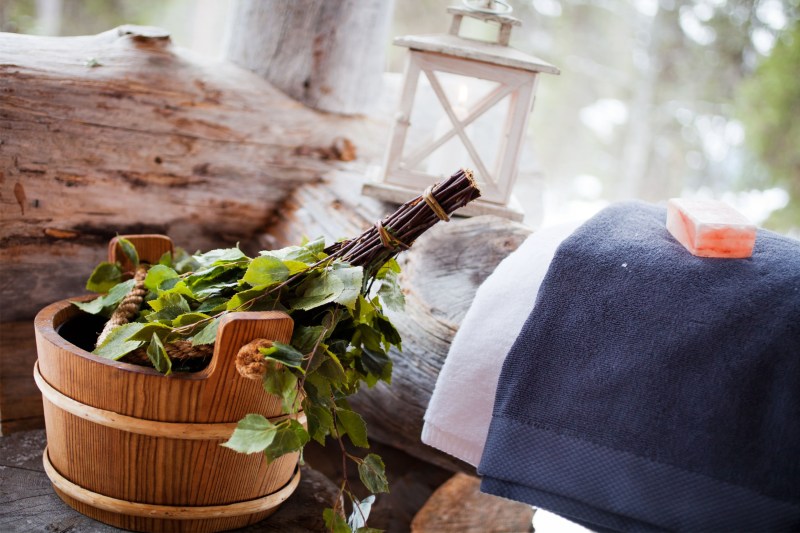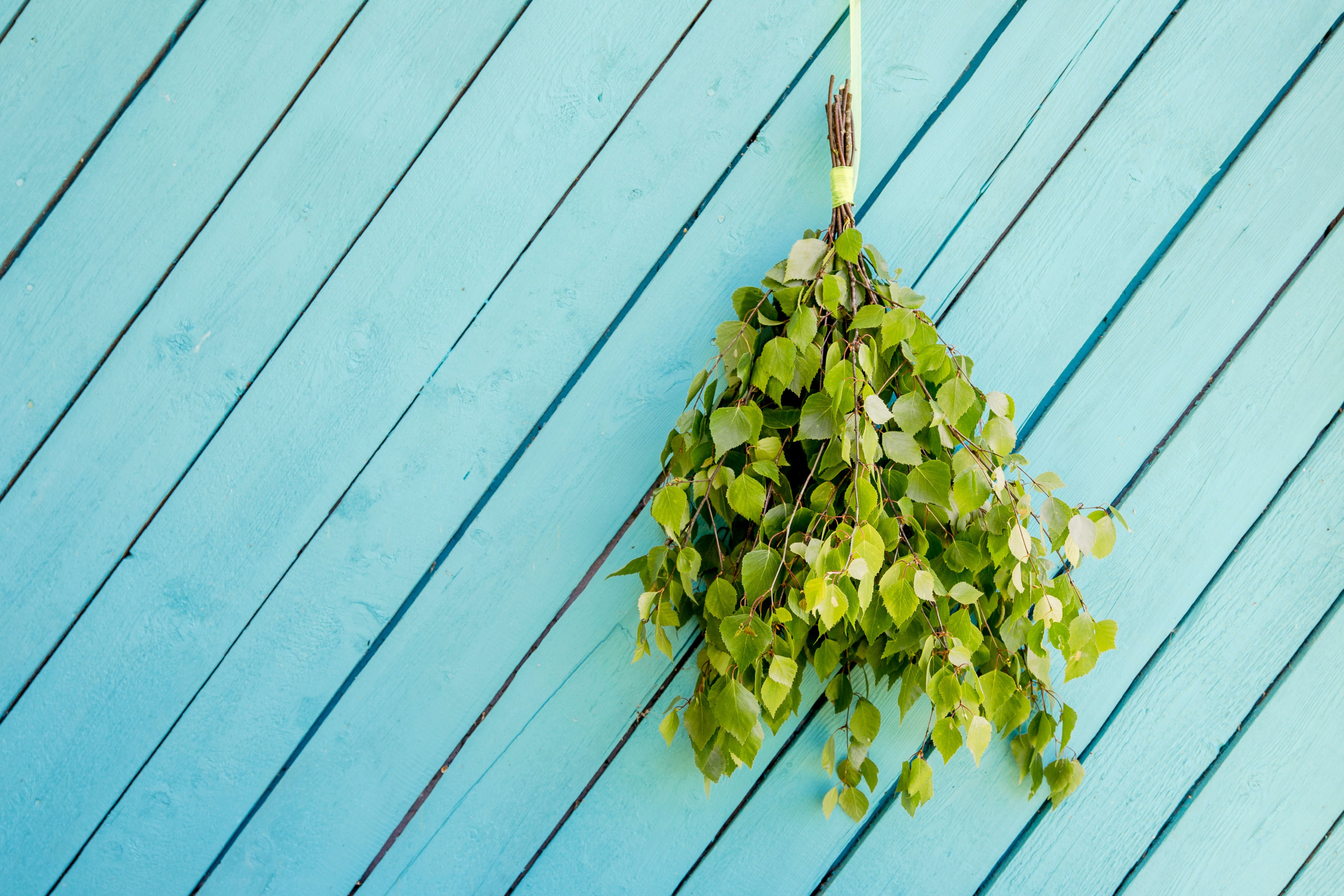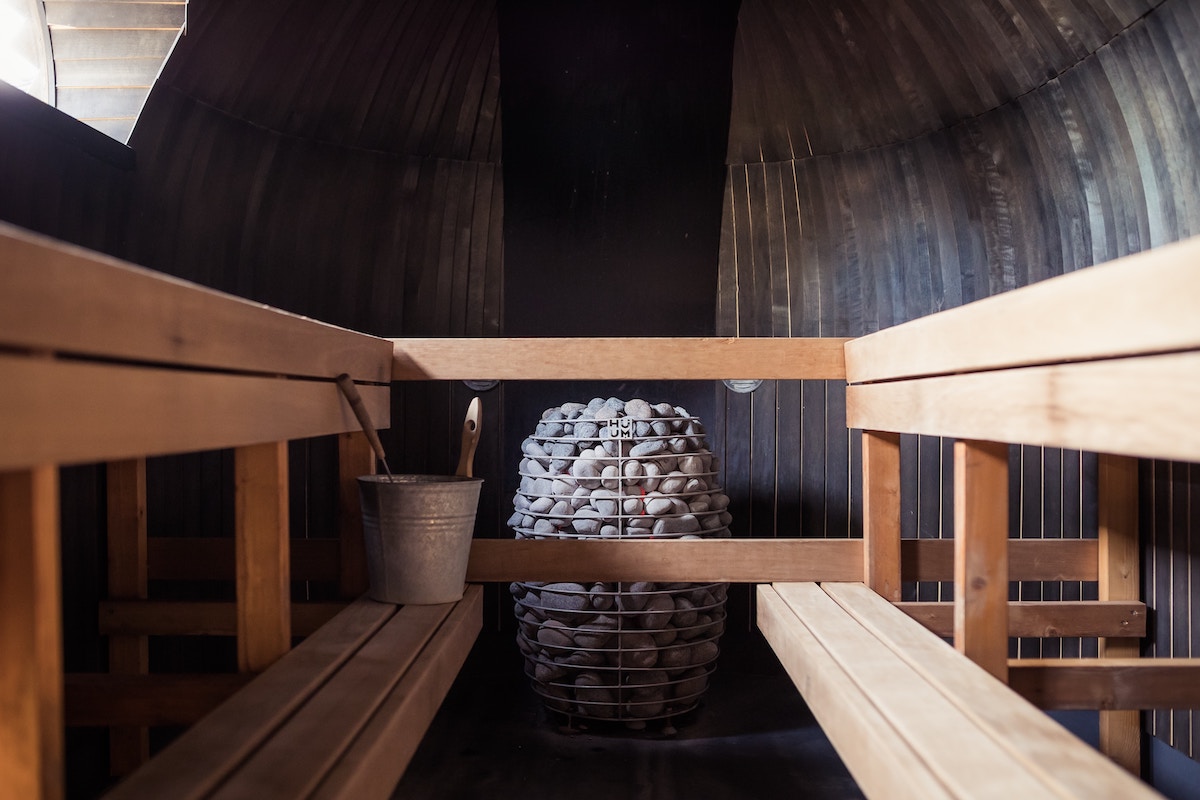
If you’ve ever had the chance to observe sauna culture, you might have seen Finnish people beating themselves with birch branches. No, they’re not crazy. Sauna culture in Finland has been using birch branches for centuries to enhance sauna benefits.
This traditional practice, known as “sauna vihta,” or “sauna whisk,” involves clipping a bunch of fresh, flexible branches off of a birch tree and bundling them together. This bundle is soaked in lukewarm water for about 30 minutes, and then the Finns then gently beat themselves with the leafy branches during their sauna time.
You might be wondering if there’s any real benefit to this old Finnish ritual besides upholding tradition, and yes, there absolutely is. Read on to learn more about what the sauna vihta is and why the Finns still use it religiously in their sauna culture.

What are the benefits of using a sauna vihta?
While the exact origins of this ritual are shrouded in mystery, the sauna vihta is believed to promote relaxation and rejuvenation and encourage a feel-good vibe in the sauna. That said, there are also a bunch of proven health benefits as well. Let’s take a look at some of them!
Increased circulation
Hopping into the Finnish sauna will increase your blood circulation whether you use a sauna vihta or not, but the Finns are always looking for new ways to improve the benefits. The sauna vihta is definitely one of those ways.
Here’s how it works:
When a person gently brushes birch leaves against their skin, it creates light friction, which helps increase blood flow on the surface of the skin. Comparable to a massage, this gentle stimulation helps improve the delivery of oxygen and nutrients to your skin cells.
Enhanced relaxation
While it might seem weird to outsiders, the Finns swear that the sauna vihta enhances relaxation. Despite the odd practice, there is some truth to this claim.
The use of a sauna vihta actually stimulate the body’s natural relaxation response. As the birch leaves make contact with the skin, they activate the body’s parasympathetic nervous system, which is responsible for the body’s rest and relaxation response. This can help reduce feelings of stress and tension and promote a sense of calm and relaxation.
The rhythmic beating of the vihta against the skin creates a soothing and meditative effect, which isn’t comparable to anything else. The fragrant aroma of the birch leaves can also help create a peaceful and relaxing atmosphere in the Finnish sauna, further enhancing the overall experience.
Absorption of essential oils and antioxidants
Let’s be real: Birch trees smell amazing, and that’s one reason why Finns love this tradition. That said, the sauna vihta can also prepare your body to absorb essential oils and antioxidants. The gentle friction of the birch leaves is a fantastic exfoliant, removing dead skin cells and unclogging pores and sweeping them away.
The birch leaves themselves actually contain a ton of natural essential oils and antioxidants that can absorb through your skin, which can reduce inflammation, among other things. This two-in-one tool is so good at what it does that Finns continue to use the traditional sauna vihta whenever they want to upgrade their sauna experience.

How can I get similar results without a sauna vihta?
If you don’t live in an area with birch trees, it might be challenging to get your hands on a sauna vihta. That said, there are a bunch of ways to achieve the same results. The sauna vihta has two major traits — first the scent of the oils, and then the friction against the skin. If you can simulate both, you’ll be golden!
Put birch essential oils in your sauna water
The fragrance is easy to replace with a bottle of birch essential oils. Just place a few drops in your bucket of water, and then throw it on the hot stones like normal. This makes the steam smell heavenly, and you’ll still get all the relaxation benefits. If birch isn’t your cup of tea, get creative with some other essential oils instead!
Stimulate your skin through dry brushing
If you’ve got a natural-bristle exfoliating brush lying around, then you’re in luck! This will be just the thing to get rid of all your dead skin cells before your Finnish sauna session. Start at your feet or legs and work your way up, using light pressure to avoid damaging the skin. For the best results, use a rhythmic circular motion.
Use a towel to exfoliate
Don’t have an exfoliating brush? Not to worry. You can get similar results with a small towel. Run the towel under a hot water faucet and then wring out the excess water. Use that same circular motion and gently rub your skin for the desired effect.

Final thoughts
The use of birch in sauna rituals has been passed down through many generations, and it remains an important part of Finnish sauna culture today. The gentle stimulation of the sauna vihta helps improve blood flow, promotes relaxation, and enhances the absorption of essential oils and antioxidants. With these health benefits, it’s clear that the use of birch in sauna rituals is here to stay, and will continue to be cherished for many generations to come. Why not give it a try?



